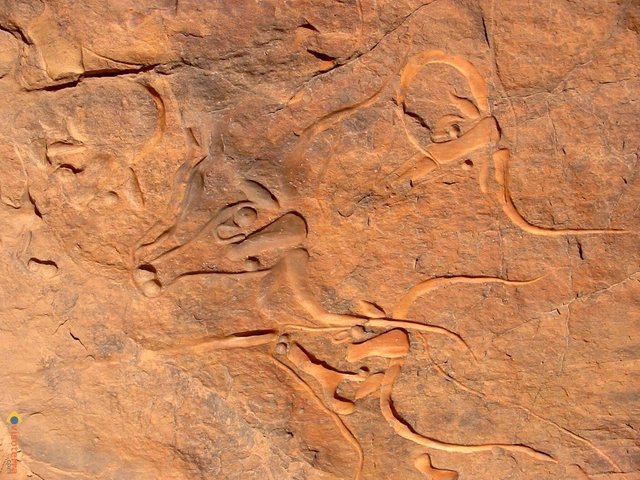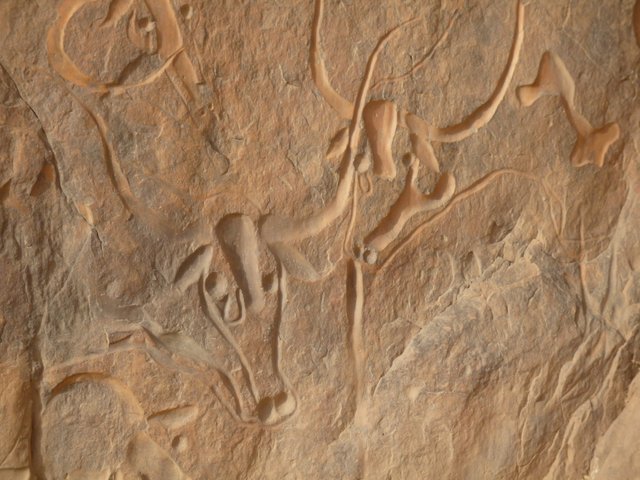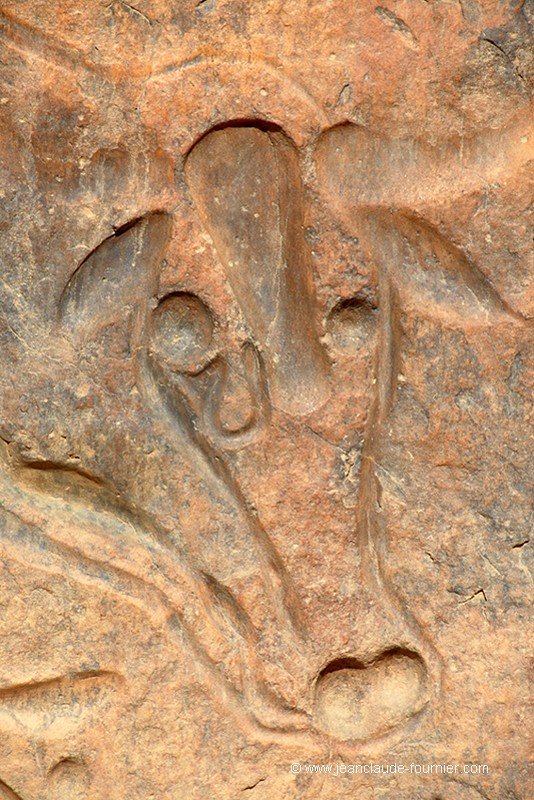The cow that cries, a prehistoric artistic masterpiece

The invention of agriculture by man, marks its entry into the Neolithic (9000 AV. Its tools are more varied and more often polished. At the end of thousands of years of evolution, man sets himself up to live differently; And is increasingly focusing on its sites for a sedentarization. It thus passes from an economy of predation, to an economy of production, and animal domestication.
Many places still bear traces of this evolution, and by continuing the practice inherited from his ancestors, the Man of the Paleolithic continues to relate by etching and painting everything related to his daily life or his spirituality.
It is in the Saharan Atlas, and in the Central Sahara, in particular the Tassilis and the Hoggar, that we find the various achievements of what constitutes Saharan rock art. It brings together thousands of works listed since the beginning of the discoveries (19th century), and continues to fascinate researchers around the world.
Why is the crying cow , cries?

The period of the rock art, characterized by the omnipresence of the representation of the cattle: the Bovidian, informs us about the daily life of the Palaeolithic farmers.
One of the most emblematic engravings of the Tassili n'Ajjer is undoubtedly that of the bovid Tigharghart, more commonly called: the cow that cries.
The fresco is about 25 Km from Djanet, on the flat wall of a mountain. It represents a small herd of cattle; The specialists specify that it is a bas-relief because this engraving is different from those realized by picketing. The grooves dug in the rock bring a whole other dimension, and an unprecedented realism. It is a masterpiece of sculpture.
The other originality of the engraving, dated more than 70,000 years ago, resides in the tear figuration of the bovids, which has given rise to several interpretations. According to some, when water is lacking in the cows' bodies, their eyes are secreting a liquid ... According to others, it is simply a mark of color different from the rest of the body of the animal. But the most widespread legend, and what the guides will tell you if you are visiting the area, is this: "These cows came to graze in the corner, and there was a guelta from which they drank. During periods of drought, it was rare to find water, hence the tear that flowed from the eyes of these cows. The artist wanted to immortalize this image by making this engraving ". It should be noted that desertification has not been implemented in a linear or sudden way. Climatic fluctuations have in fact caused an alternation between humid period, which encourages and favors the human installation, and the arid period.
The Bovidian, constitutes a period of splendor of the Saharan art rock. It knew several forms of figuration, and gradually left its purely economic function, in order to subsequently invest the sacred space.
